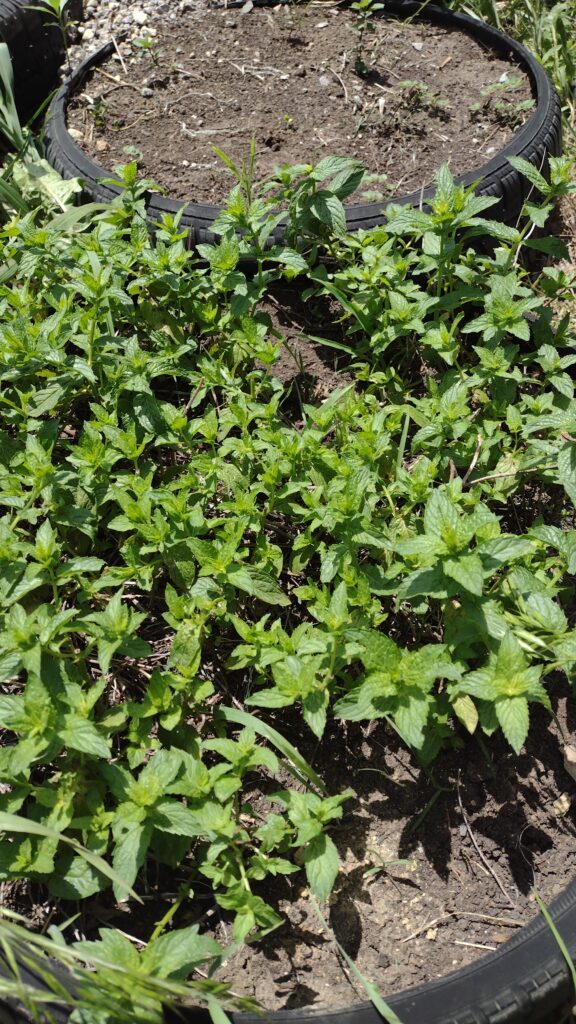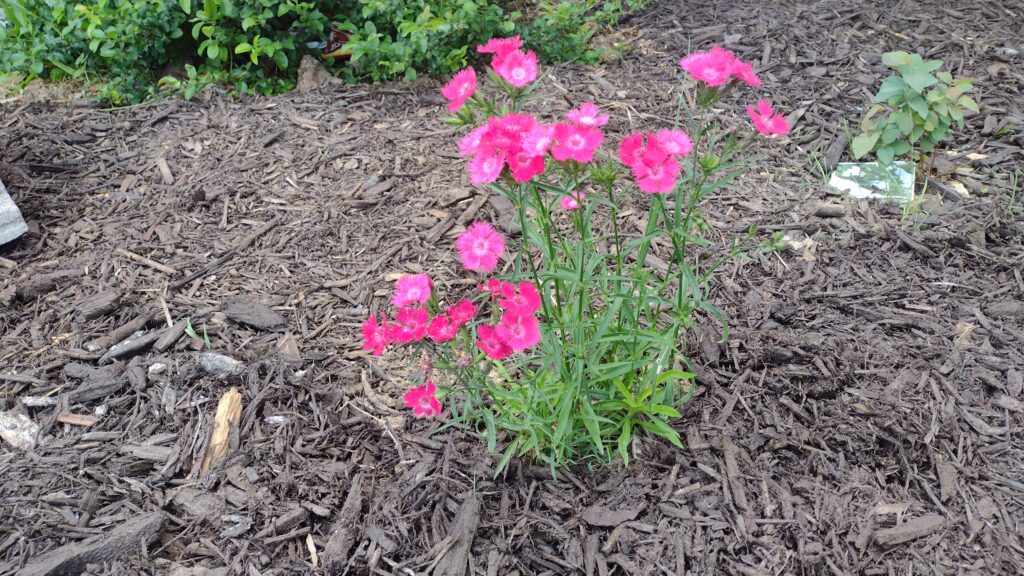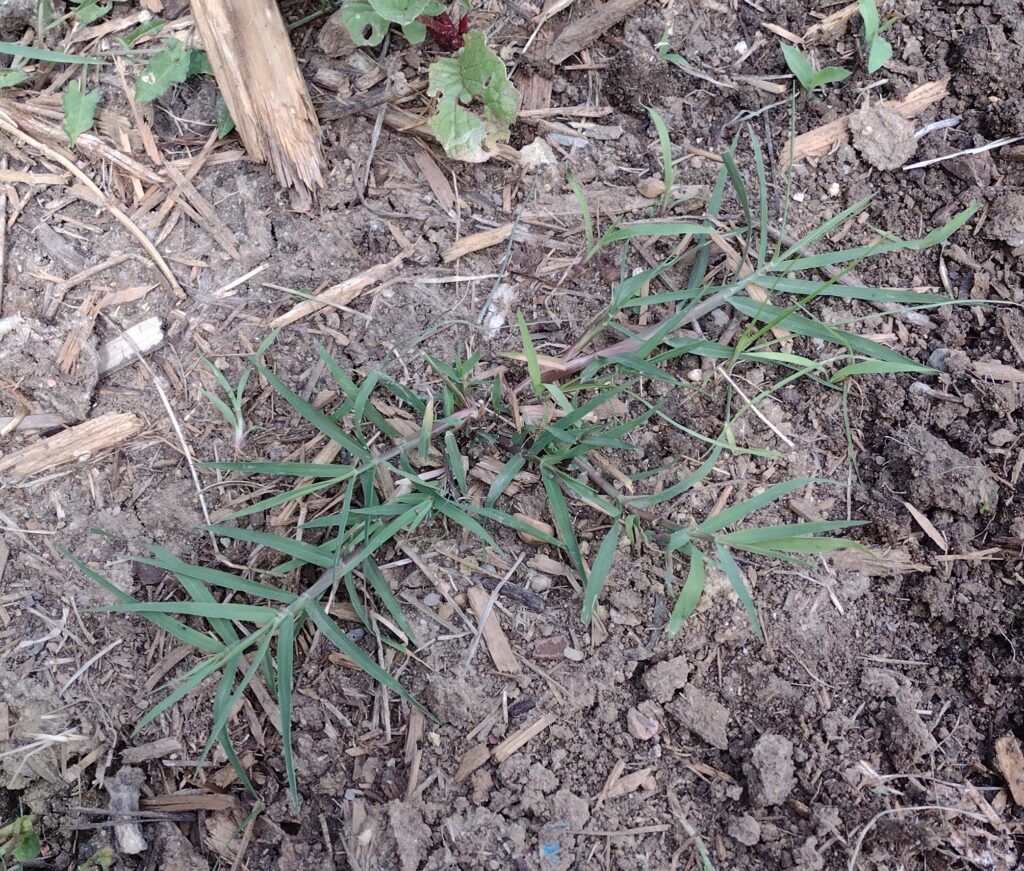Since moving to Kansas, and especially to Prairie Elms, I’ve become something of a fan-girl of the Dyck Arboretum of the Plains. Their “Prairie Notes” blog has been formative in my growing understanding of the prairie ecosystem and the multifaceted value of “playing nicely” within our native plant communities.
I love that, while they’re focused on native plant communities, the folks over at the Arboretum aren’t native-nazis – they even sell some non-native plants at their twice-yearly plant sale.
I’d like to think I’ve internalized some of their philosophy, planting mostly native plants around my home and making plans for a little prairie restoration towards the back of our lot.
But as I’ve been busy identifying plants on our property, attempting to eradicate the invasives, and plant or support the “goodies”, I’ve grown frustrated at the lack of information and the contradictory information about invasive plants.

Most recently, I borrowed How to Eradicate Invasive Plants by Teri Dunn Chace from the library – and then felt like throwing it against the wall. Chace classifies pretty much anything that spreads on its own as invasive, regardless of its nativity or impact on ecosystems as a whole – so bee balm (Monarda), a native that self-sows and spreads via rhizomes (especially in a cultivated garden environment), is lumped in with Amur honeysuckle (Lonicera maackii), an Asian import that is actively transforming the prairie, crowding out numerous native species and offering only substandard nutrition to the birds that are feeding on its berries and dropping them everywhere.

This sent me (yet again) on a quest to find a truly useful tool for evaluating the friendliness or thuggishness of various plants within Kansas. And, this time I finally hit paydirt. (What did I do differently this time as compared to the dozens of times I’ve searched for the same information? I have no idea.)
I found a presentation by Brian Obermeyer (pdf link) of the Kansas Nature Conservancy which stewards the nation’s largest prairie remnant, the Tallgrass Prairie National Preserve. Obermeyer describes a four part invasiveness index and references Craig Freeman of the University of Kansas. I followed the Craig Freeman thread and found it – a list of all plant species in Kansas (pdf link) with invasiveness index for each! Jackpot! (I realized after the fact that Freeman is also co-author of one of my favorite plant field guides: Trees, Shrubs, and Woody Vines in Kansas.)
The invasiveness index (as described by Obermeyer in the above linked presentation) is as follows:
- Casual alien
- Naturalized non-invasive
- Invasive non-transformer
- Invasive transformer
Casual Alien

These are non-natives that grow in Kansas but “do not form self-replacing populations”. Examples include Kansas’s field crops of wheat (Triticum aestivum), soybeans (Fabaceae Glycine) and cotton (Gossypium hirsutum). These exist in Kansas because of man’s continued inputs. Planting these will not harm Kansas ecosystems (that is, apart from what you might be destroying to cultivate them).
Naturalized Non-invasive

These consistently sustain a population in Kansas without human cultivation but “typically do not invade semi-natural or natural habitats”. Daughter plants are typically near their parents. Examples include grape hyacinth (Muscari botryoides), Bachelor’s button (Centaurea cyanus), and dwarf bearded iris (Iris pumila) – garden plants that have a tendency to self-sow or spread via vegetative means. Depending on your goals, you may or may not want these in your garden. If you want a monoculture lawn, for example, these may not be your friend. If you want to fill a large space with pretty flowers without spending a lot of money or huge amounts of time, these may be just the ticket. Either way, they are not destroying Kansas’s native ecosystem (whatever Chace may say).
Invasive Non-Transformer

Now we’re starting to get to what the US government is talking about when they use the term “invasive” – these plants are “invading” semi-natural and natural areas and disrupting them. They “produce offspring, often in large numbers, at large distances from site(s) of introduction”. Because they spread at a large distance from where they are initially planted, the choice to plant these has impacts beyond one’s own yard and that of his next door neighbors. These are plants like common periwinkle (Vinca minor), dame’s rocket (Hesperis matronalis), bermudagrass (Cynodon dactylon var. dactylon), and Siberian elm (Ulmus pumila). In the interest of preserving Kansas’s native ecosystem, I don’t want to be planting these. (Side note: of the dozen or so trees that we lost in the recent tornado, most were the Siberian elms for which Prairie Elms was named. Thankfully, our recently planted American elm escaped damage, as did the small stand of American elms toward the middle of our property.)
Invasive Transformers

These are the big, bad boys. Like the invasive non-transformers, they are producing offspring far from their parent plants – but they’re also dominating and transforming the natural spaces that they are invading. They “can change the character, condition, form or nature of ecosystems over a substantial area relative to extent of ecosystem.” These include Bradford/Callery pear (Pyrus calleryana), smooth brome (Bromus inermis), Russian olive (Elaeagnus angustifolia), and Amur honeysuckle (Lonicera maackii). The responsible Kansas gardener will not only not plant these, but will work to eradicate them from their land posthaste. (We have all four of the above named species here at Prairie Elms and have only just begun the fight.)
For my own purposes (prioritizing the removal of the most harmful non-native species and ensuring that I’m not planting species that are invasive in my area), I am preparing a list of all of Kansas’s invasive transformers and non-tranformer invasives along with links to their identification.
I will link those here once I have them complete.
